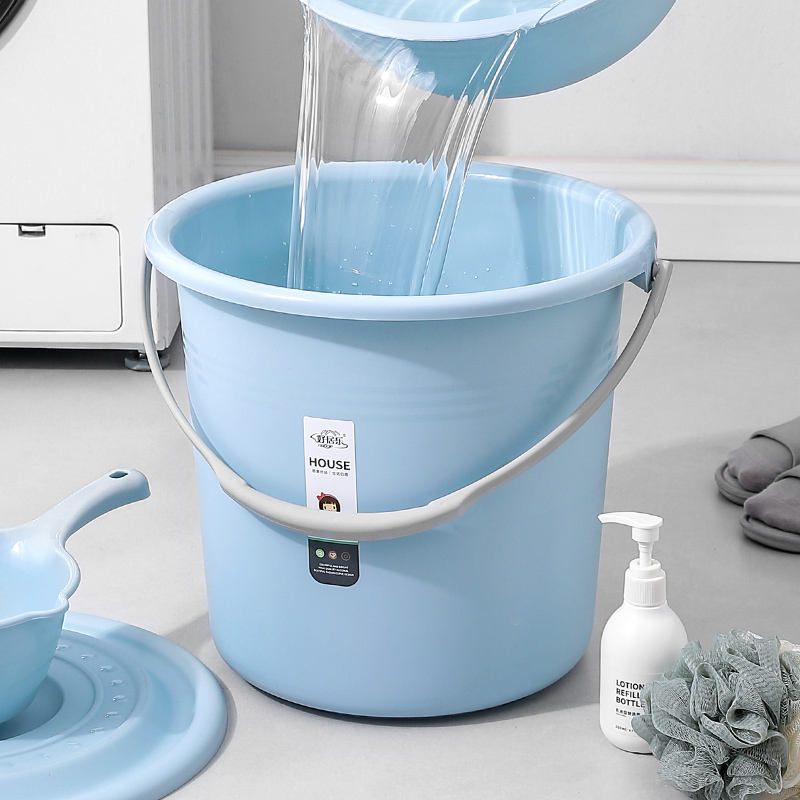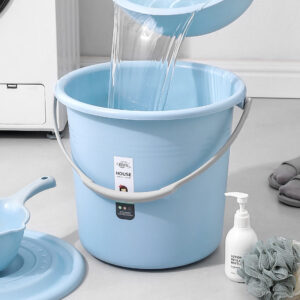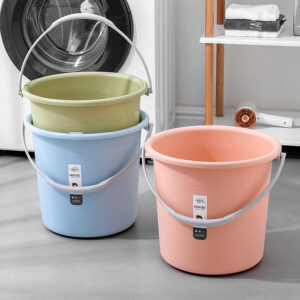Choosing the right plastic bucket for a task is crucial for ensuring efficiency, durability, and safety. With so many options available, the size, material, design, and intended use all play a key role in determining the best bucket for the job. Here’s a guide on how to select the perfect plastic bucket for any task:
1. Understand the Task Requirements
- Why It’s Important: Different tasks require different types of buckets. Knowing exactly what you’ll be using the bucket for will help you make an informed decision.
- Questions to Ask:
- Will it be used for cleaning, carrying, mixing, or storage?
- Do you need a spill-resistant design or a waste bucket?
- Does it need to hold liquids, solid materials, or both?
2. Consider the Capacity
- Why It’s Important: The size of the bucket depends on the amount of material or liquid you need to handle. If it’s too large, it may be cumbersome; if it’s too small, you’ll have to make multiple trips.
- Common Capacities:
- Small (1-3 gallons): Great for small cleaning tasks or mixing paint.
- Medium (5 gallons): Ideal for general use like gardening, cleaning, or carrying items.
- Large (10 gallons and above): Best for heavy-duty tasks like construction work or storing bulk materials.
- Tip: If in doubt, opt for a 5-gallon bucket, as it’s the most versatile and commonly used size.
3. Material and Durability
- Why It’s Important: Plastic buckets come in different materials that affect their strength, durability, and suitability for specific tasks.
- Material Options:
- High-Density Polyethylene (HDPE): Durable, resistant to chemicals, and UV stable. Great for outdoor use and holding chemicals or cleaning solutions.
- Low-Density Polyethylene (LDPE): More flexible and lightweight, but less durable. Suitable for lighter tasks like holding non-abrasive materials.
- Polypropylene (PP): Very resistant to chemicals and high temperatures. Perfect for industrial use or food-related tasks.
- Food-Grade Plastic: If the bucket will be used for storing food or potable water, ensure it’s food-safe certified, usually made from HDPE or PP.
- Tip: Choose HDPE if you need a bucket that can withstand tough conditions or chemicals. PP buckets are ideal for higher heat tolerance.
4. Weight and Portability
- Why It’s Important: If you’re going to be carrying the bucket around or lifting it often, weight is a crucial factor. A heavier bucket may be more durable but harder to move.
- Considerations:
- If you need to carry the bucket over long distances, look for a lighter bucket made from LDPE or thin-walled HDPE.
- If the bucket will stay in a fixed position (like for storage), weight may not be as critical, and you can opt for a heavier, more durable option.
5. Handle Design
- Why It’s Important: The handle design impacts how comfortable and easy it is to carry the bucket, especially when it’s full.
- Handle Types:
- Plastic Handles: Often found on lighter-duty buckets. These are usually rigid but can be less comfortable for heavy loads.
- Metal Handles: Stronger and more ergonomic, especially for heavy-duty tasks. Some also have a rubber grip for added comfort.
- Dual Handles: If you plan to carry the bucket over your shoulder or with both hands, a dual-handle design may provide more balance and stability.
- Tip: Look for a handle that’s reinforced and ergonomically designed if you need to carry heavy loads.
6. Shape and Design
- Why It’s Important: The shape of the bucket can impact its efficiency for specific tasks. Some tasks require wide openings, while others need a tapered design for easier pouring.
- Considerations:
- Wide Opening: A bucket with a wide top is ideal for mixing, cleaning, or carrying bulky materials.
- Tapered Design: If you need to pour liquids or materials without spillage, a tapered design with a spout can be useful.
- Stackable Design: For storage purposes, look for a stackable bucket that can be neatly stored without taking up much space.
- Tip: Tapered buckets are perfect for tasks involving pouring, while wide-opening buckets are better for mixing and storing materials.
7. Chemical Resistance
- Why It’s Important: If you plan to store or carry chemicals, paint, or other industrial materials, chemical resistance is crucial for the bucket’s longevity and safety.
- Considerations:
- HDPE buckets offer high resistance to most acids, bases, and chemicals.
- Polypropylene (PP) is especially resistant to high temperatures and chemical exposure.
- Tip: For tasks involving harsh chemicals, look for a bucket labeled as chemical-resistant or industrial-grade.
8. Lid Compatibility
- Why It’s Important: If your task requires storage or transport of materials, a lidded bucket can prevent spills and contamination.
- Considerations:
- Some plastic buckets are designed to fit snap-on lids that help keep the contents secure.
- If you need to stack buckets, make sure the lids are compatible with stacking designs to maximize storage efficiency.
- Tip: Check if the bucket has a sealable lid if you’re working with liquids, or if it’s vented if you need air circulation (for example, in paint or food storage).
9. Special Features
- Why It’s Important: Depending on the task, additional features like measurement marks, pour spouts, or non-slip bases can enhance your bucket’s functionality.
- Considerations:
- Measurement Marks: Buckets with graduation lines are useful for accurate mixing or measuring.
- Non-Slip Base: Ideal for keeping the bucket stable on slippery surfaces.
- Pouring Spout: If you need to pour liquids without spilling, look for buckets with built-in spouts.
- Tip: For tasks requiring precise measurements, choose a bucket with graduation marks.
10. Budget Considerations
- Why It’s Important: Prices can vary based on the material, size, and design features of the bucket. Setting a budget will help you narrow down your choices.
- Considerations:
- Lighter-duty buckets with fewer features will be more affordable.
- Heavy-duty industrial buckets with specialized designs may come at a higher price point but offer better durability and performance.
- Tip: If you need multiple buckets, buying in bulk can often save you money.
Conclusion
Choosing the right plastic bucket comes down to understanding the specific needs of the task at hand. Whether you’re handling heavy-duty industrial tasks, simple home chores, or food storage, selecting the right material, size, and design can make all the difference in efficiency and durability. Make sure to consider factors like capacity, handle design, and chemical resistance before purchasing.












